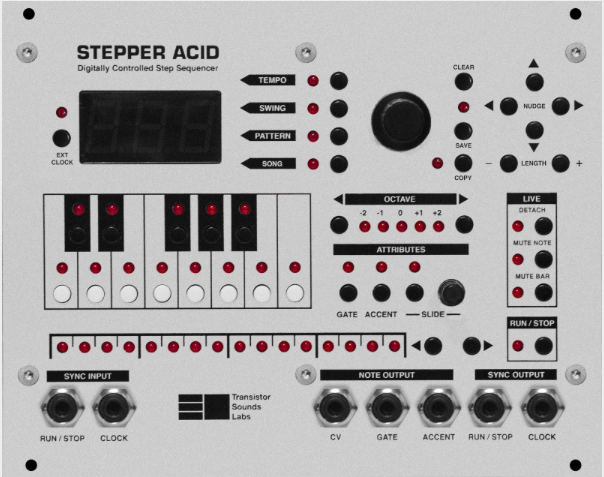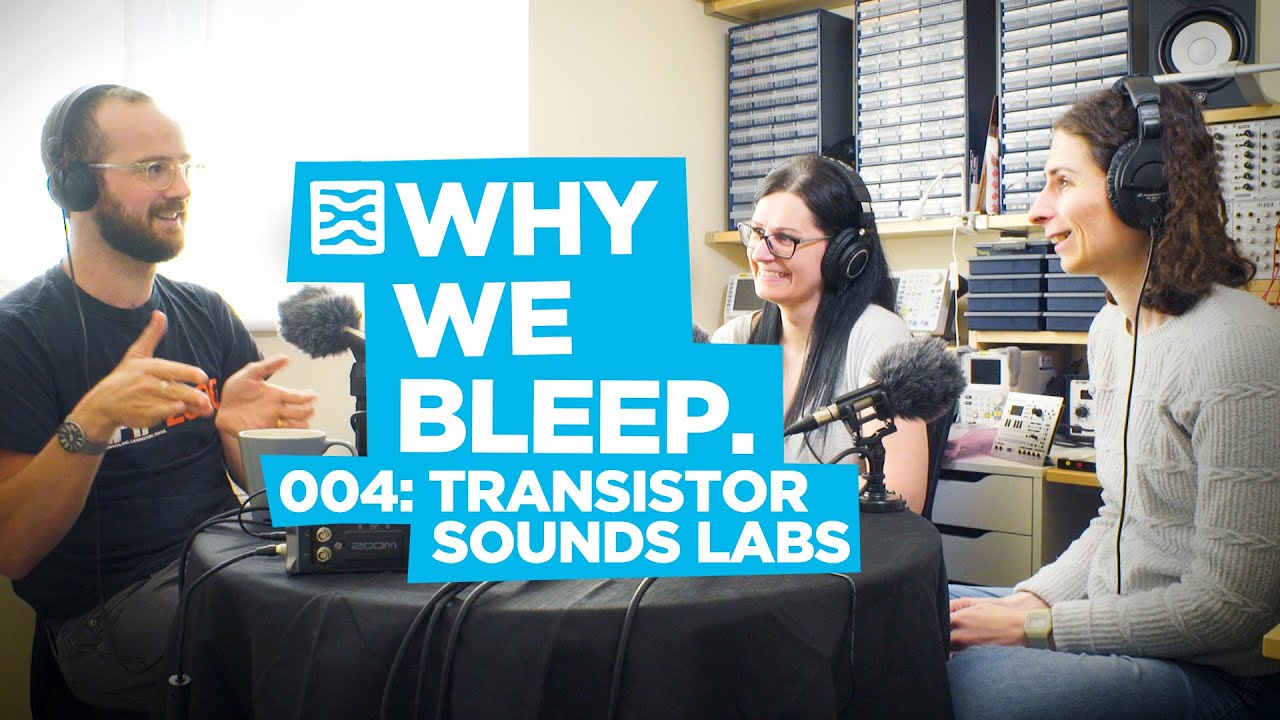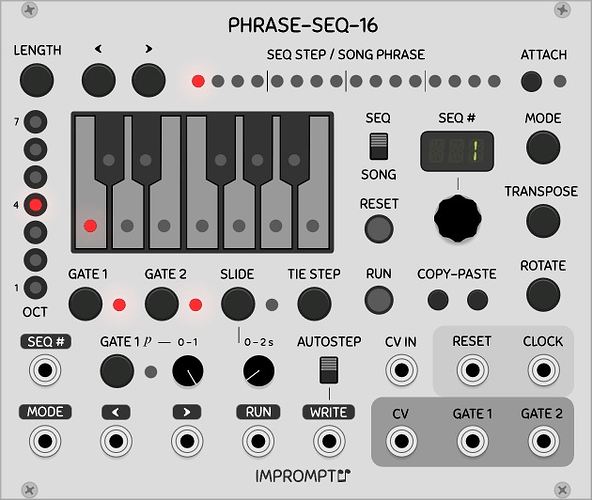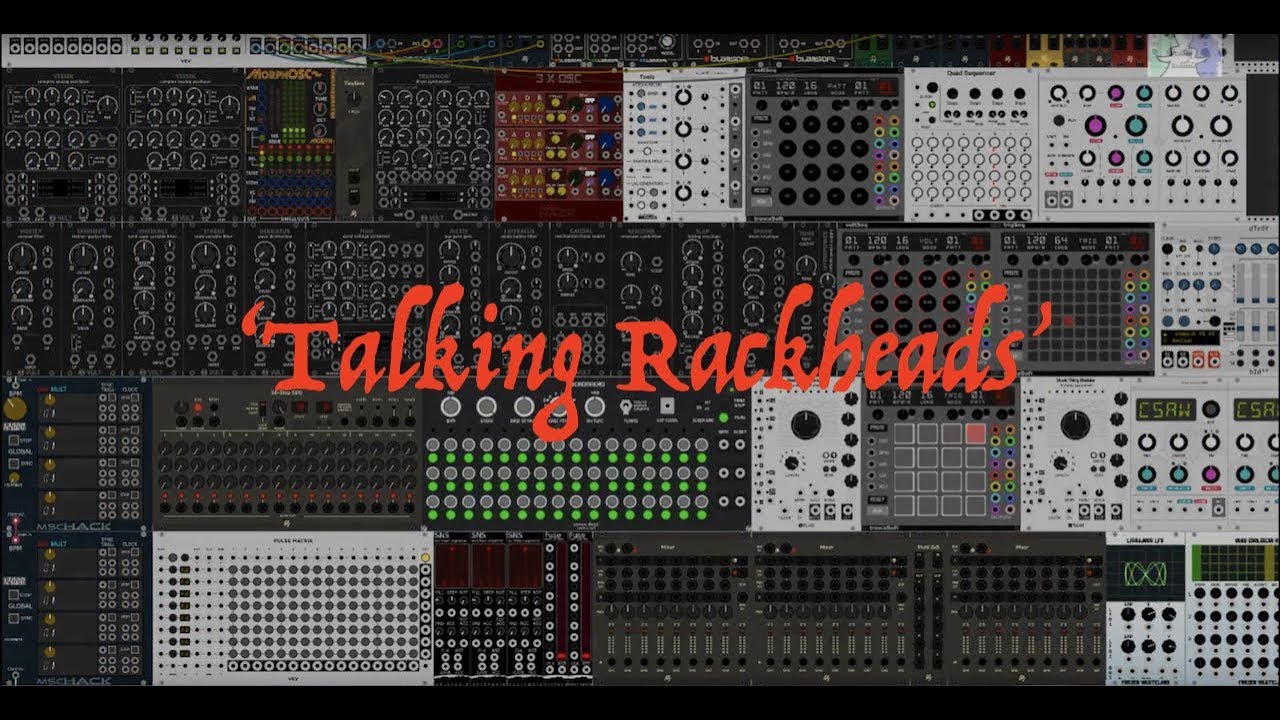Funny how the people interviewed made this:

which inspired this:
And that the new talking rack heads is all about it.
Ohhhhh, that’s the VCV version of the module? Very interesting.
It would be interesting to see what could be done in audulus with this sort of design. 
I appreciate in the “how we bleep” interview that they explain how they started with the interface design and then moved on to accommodating the end user through the build, instead of the reverse. We need to build a time freezer module so that we can all catch up with how much interesting stuff there is to do right now.
I forgot to add a link to the GitHub docs for the Phrase-See-16
Pretty amazing that this stuff is all being written for free. It seems to have squashed a lot of the gusto from the soft synth eurorack developers, which I think is good because it promotes an open system – the kind of ethos that the two from Transitor Sounds Labs above are all about.
The phrase sequencer is an interesting idea, but I think we’ll need some more effective storage in Audulus to make it practical. Maybe when we have a MIDI piano roll you could index a group of MIDI files.
Always appreciate your input. I wasn’t thinking about it in terms of storage, because the amount of data used to store a sequence is so minuscule. However, one still needs a way to retain all of the functions, which must be a different process than chaining a dozen 8 step sequencers (I would hope)…However, one of the directions that Audulus could go would be to find ways to indicate the state of a sequencer without needing to display any of the interface that does not pertain to the state. In saying that, I suspect that your reservation regarding “effective storage” is a deeper insight than I could quite understand at this point.
Feel free to comment on what effect storage actually is. I should say that I am not pining to get into making something like this, it just helps me understand more about Audulus by understanding the differences between it and the various synthesis platforms right now.
I just want to add that when you had mentioned the piano roll idea a few days ago, I imagined a mini DAW which seemed cute but maybe not as important as I had realized. If I understand you correctly then, the piano roll is the way that you store sequences – as opposed to just being a GUI?
The data/sample node in Audulus 4 will make stuff like storing sequences possible by writing the sequences as samples in a .wav file. You could have a 44,100 step sequence in 1 second of a wav file! We’ll also be able to to MIDI files of course at some point. Whether they get imported into their own “play” node, or imported into the MIDI piano roll is up for debate.
At this point the only persistent storage (that is, something retained when a patch is closed then opened) is the position of a knob, the state of a toggle or a numeric value stored in an expression node. All must be manually configured by the user. If you’ve been exploring the module library, you may have noticed a number of modules that store patterns or other data as a series of numeric expression nodes using decimal to binary converters. This is a rather crude work-around in place of more flexible storage. The biggest problem is there is no persistent storage in Audulus that can be written to. Lets say you want to store a series of notes for a sequence. Although you can manipulate the notes any way you like, there is no way to save the sequence other than by manually setting a series of knobs, toggle switches or entering a series of numbers into expression nodes. You couldn’t input the notes from a MIDI keyboard or even an on-screen keyboard. The only writable storage in Audulus is the sample and hold node and its value resets to zero if you close the patch. This is slated to change with the introduction of Audulus 4 and possibly earlier depending on what MIDI improvements are introduced in upcoming version 3 updates.
I appreciate both your and biminiroad’s responses here. These are the sorts of things you don’t really think of as an end user. Obviously, they are also the kind of details that modular enthusiasts tend to like to know about for some reason.


